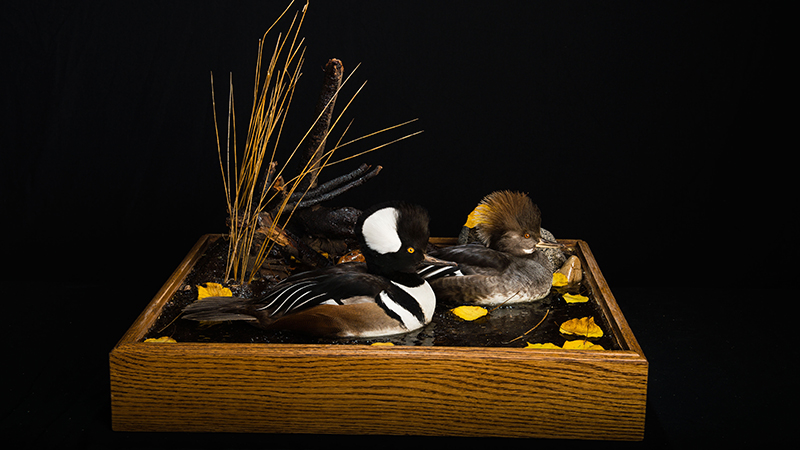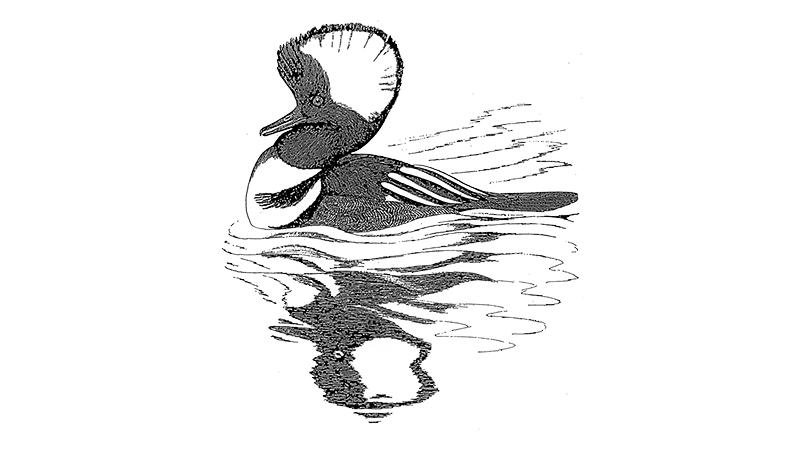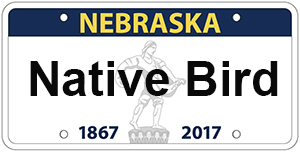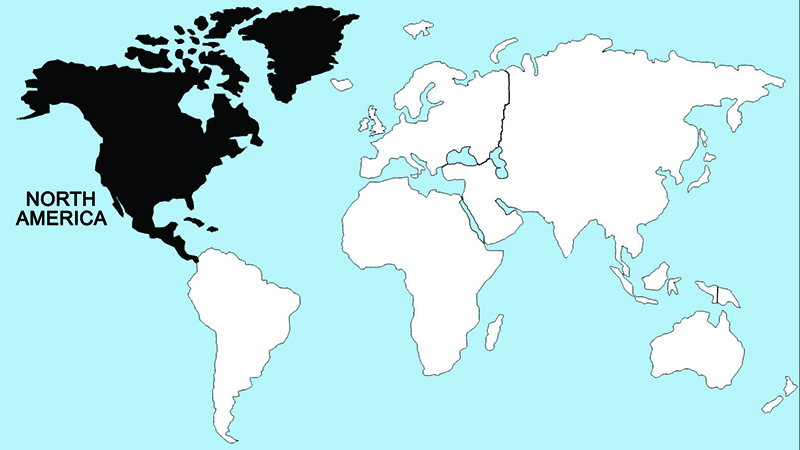Hooded Merganser

Most observers would probably admit that the hooded merganser is the most visually attractive of all the mergansers; no other duck species is able to alter its appearance so rapidly and spectacularly as can a male hooded merganser simply by raising and lowering its crest. This white crest, trimmed and surrounded by black, is located in the same place as the bufflehead's, but is far more variable in appearance owing to its highly erectile nature. It ranges from a rather narrow white stripe, in flying birds, to an enormous white oval that is considerably larger than the rest of the head during courtship. The female is also crested, but its crest is mostly rufous brown, and not nearly so varied in shape. The bill of the hooded merganser is shorter than those of other North American mergansers, but nonetheless is an effective fish-catching device. The birds nest in forested woodlands of eastern and western provinces and states, especially along clearwater streams and tree-lined lakes.
Courtship behavior of the hooded merganser is, as might be expected, marked by crest erection, as well as by head-shaking and head-throw displays, all serving to emphasize the large crest. In several ways the species' social behavior is surprisingly like that of the goldeneyes, indicating that these two groups are fairly close relatives in spite of the differences in bill shape. Females select cavities for nesting, often competing with female goldeneyes or American wood ducks for tree cavities, and sometimes even laying eggs in the same cavity. Clutches average about ten eggs, and incubation lasts about 32–33 days. Rivers that are rich in small minnows are favored for brood-rearing sites, and about 70 days are needed to bring the young to fledging.

Regions Birds Are Found


Collection Location & Year
U.S. - Alaska 2000
Taxonomy
| Order | Anseriformes |
|---|---|
| Family | Anatidae |
| Tribe | Mergini |
| Species | Lophodytes |
| Genus | cucullatus |
Gender
Female & Male
References
- Johnsgard, P. A. 1975a. North American Game Birds of Upland and Shoreline. Lincoln, NE: Univ. of Nebraska Press.
- Johnsgard, P. A. 1978. Ducks, Geese and Swans of the World. Lincoln, NE: Univ. of Nebraska Press.
- Elliot, A., J. del Hoyo, J. Sargatal, and C. Imboden, eds. 1992. Handbook of Birds of the World. Vol. 1 (Ostriches to Ducks). Barcelona, Spain: Lynx Editions.
- Kear, J. 2005. Ducks, Geese and Swans. London, UK: Oxford University Press.